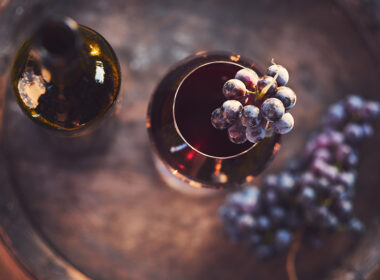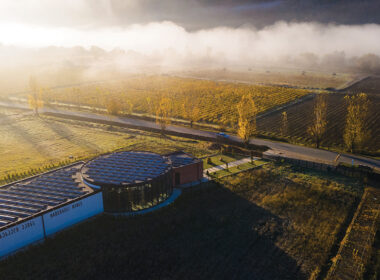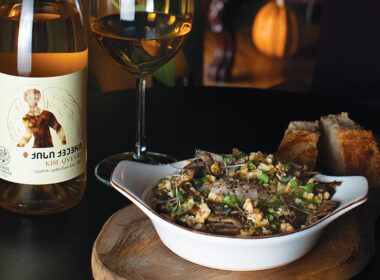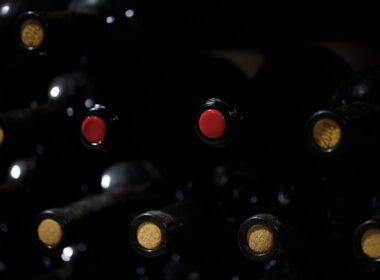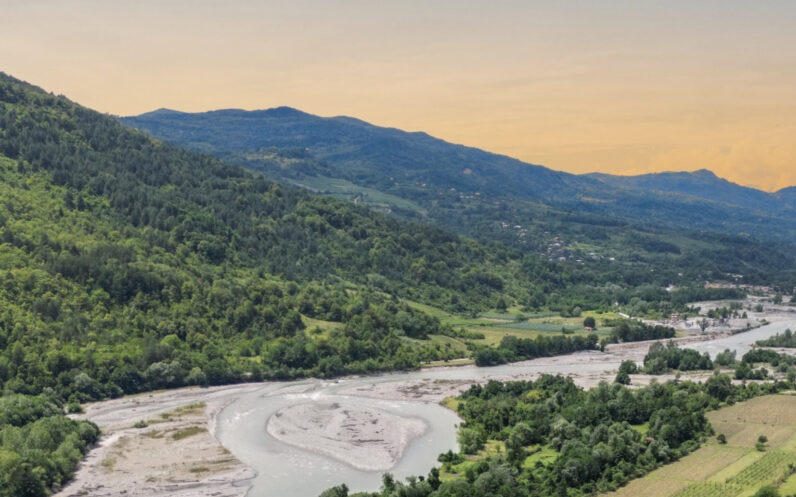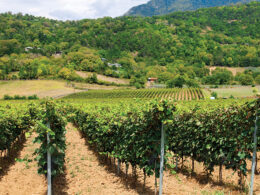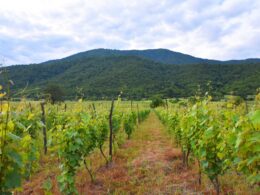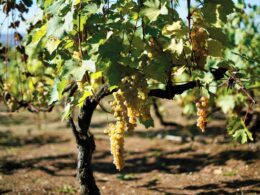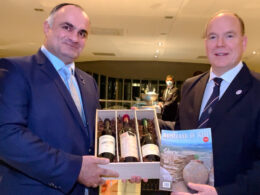| HOMELAND OF WINE MAGAZINE |
By Nana Jojishvili

Racha-Lechkhumi is one of the most noteworthy and traditional regions of Georgia in terms of viticulture and winemaking. The uniqueness of the local wines is shaped by diverse soils, climate, and autochthonous grape varieties.
The region’s character is represented well in Naberauli wines, which are made from Rachvelian and Lechkhumian grape varieties – Aleksandrouli, Mujuretuli, Saperavi, Dzelshavi, Tsolikouri, Usakhelouri and Rachuli Mtsvane.
The winery’s vineyards are located in the south, on the most favourable slopes that receive direct sunlight, ensuring high-quality grapes. Anna Dokhnadze, a professional winemaker, joined Naberauli’s mission to restore, preserve, and present the region’s unique endemic grape varieties to the world market.
Ana Dokhnadze hails from Racha by descent. Her calm, confident, and principled approach to winemaking reflects the character of a true Rachvelian. Through her profession, she has achieved her goal of forging a close connection with this region. As the senior winemaker of Naberauli, Ana brings a wealth of experience from her previous work at other wineries, including in Germany’s Rheingau region and Geisenheim. It was there that we first crossed paths in the vineyard during the harvest, and subsequently during the green operations.
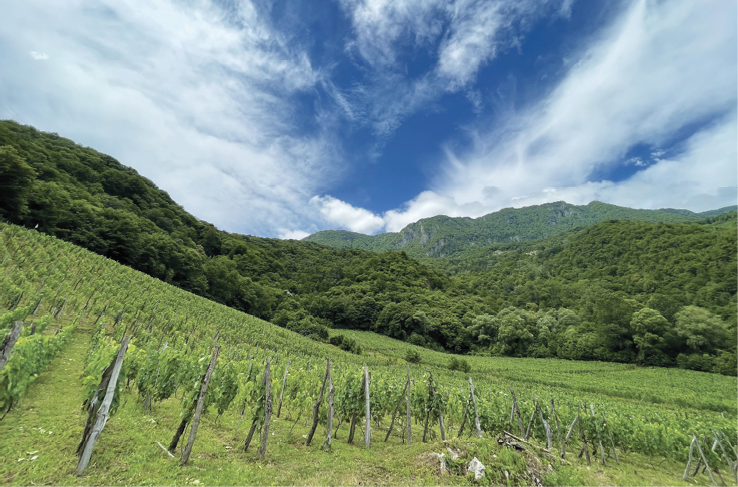
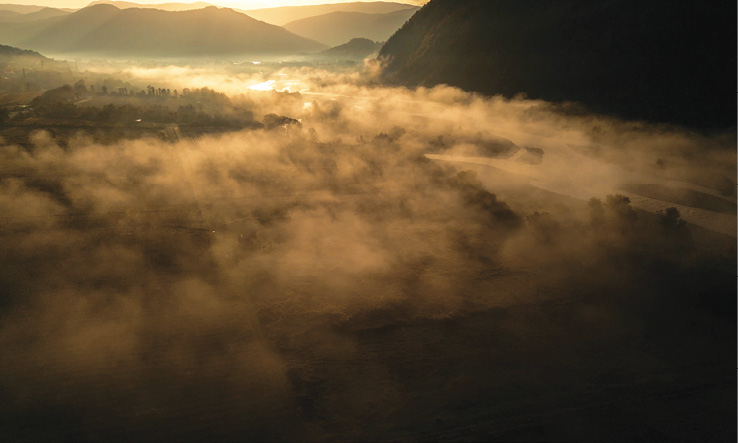
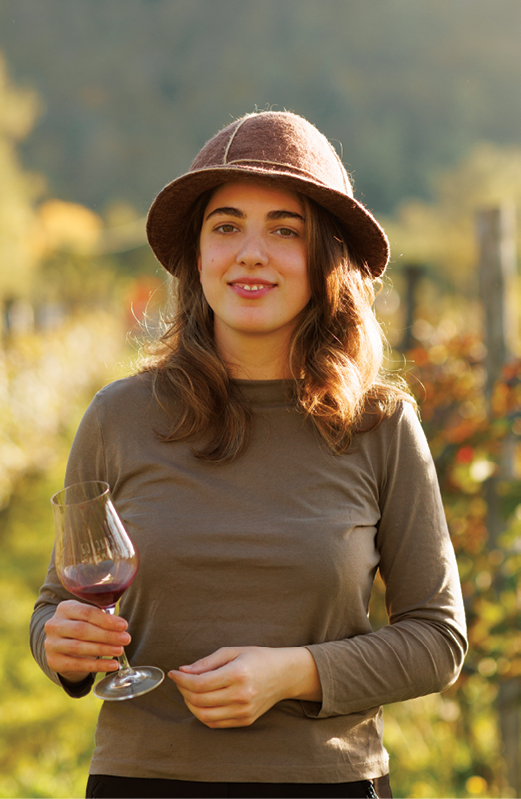
Q: Anna, can you share your thoughts on last year’s harvest and the new wines?
A: At Naberauli, where I completed my first harvest last year, I produced seven wines. Among them was Tsolikouri Lechkhumi, which was harvested in excellent condition. I aimed for this wine to have a distinct character and body whilst also adhering to the varietal’s style, in addition I wanted it to stand out, so I aged it on lees for six months. As a result, the wine acquired not only the varietal’s aromas but also the rich nuances from the lees ageing.
Anna left the bunches of Rachuli Mtsvane in the vineyard until the end of the warm autumn days to maximise their sugar levels, as she decided to craft this wine in qvevri. “I took a risk with this variety,” she explains. “Rachuli Mtsvane has a thick skin and can accumulate sugar well in Racha, but I thought it needed more for a qvevri-style wine. I wanted to make this one exclusively in qvevri. I’m still in the observation phase, and time will tell what the result of the experiment will be.”
Aleksandrouli-Mujuretuli Rosé is crisp and lively, and we will begin bottling it soon.
Aleksandrouli, I crafted as a dry style, which turned out to be very aromatic, medium-bodied, and crisp. It features the distinctive aromas of Rachvelian berries and is full of character.
I intend to age Saperavi and Dzelshavi in a barrel, to better understand their potential, as Rachvelian red wines tend to pair well with barrel ageing.
Our Tvishi (a semi-sweet wine) achieves a good balance of sweetness, acidity, and minerality. The Lechkhumian terroir is clearly expressed in this wine For the Khvanchkara (a semi-sweet wine), I aimed to maintain a well-balanced interplay of sugar and acidity.“
Anna believes that more work is needed on sweet wines, both in the vineyard and in the cellar, from a technological standpoint. “I want to do my best with each grape variety. My experience in Germany inspired me to approach Racha’s winemaking differently and to explore the full potential of the region’s varietal diversity.”
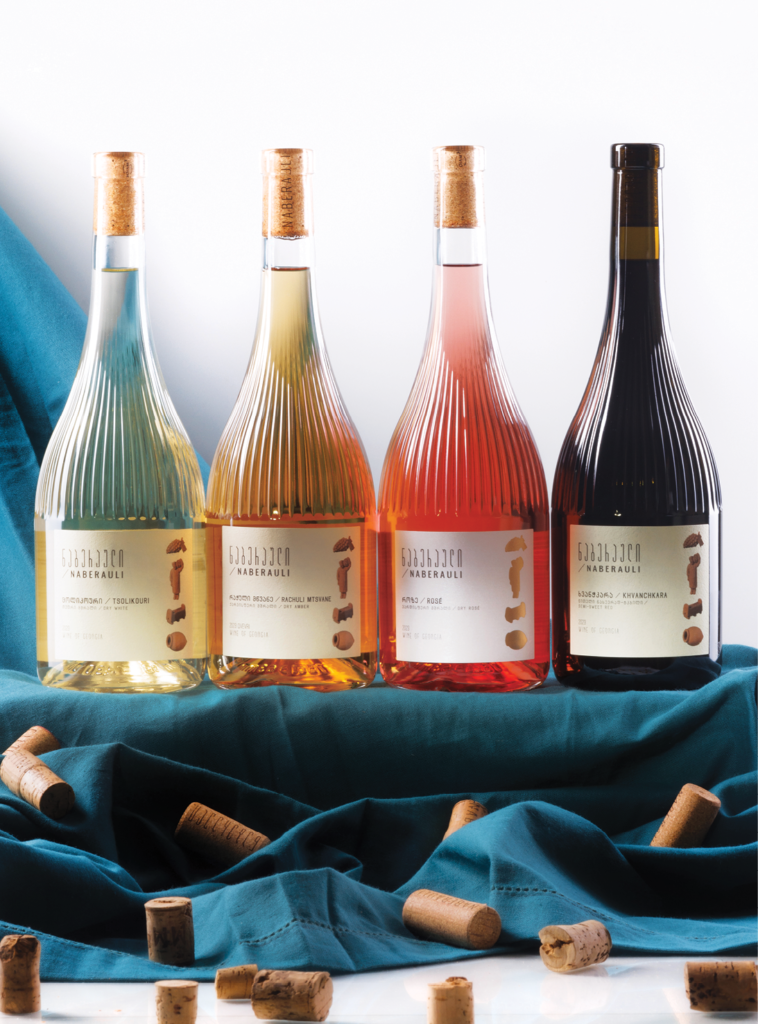
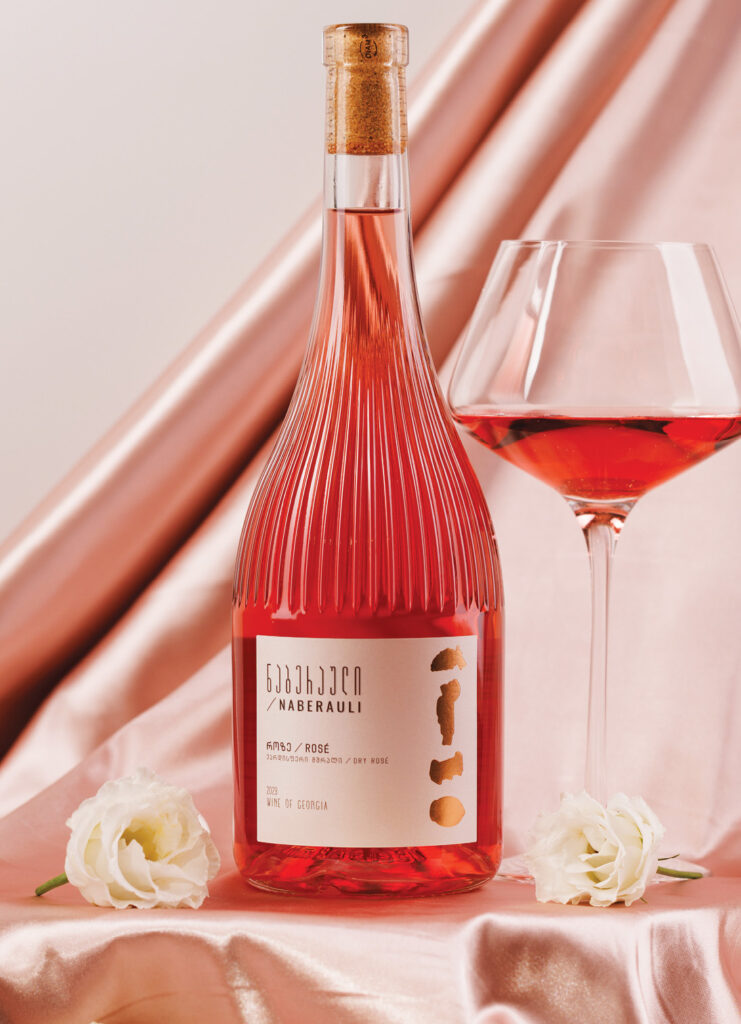
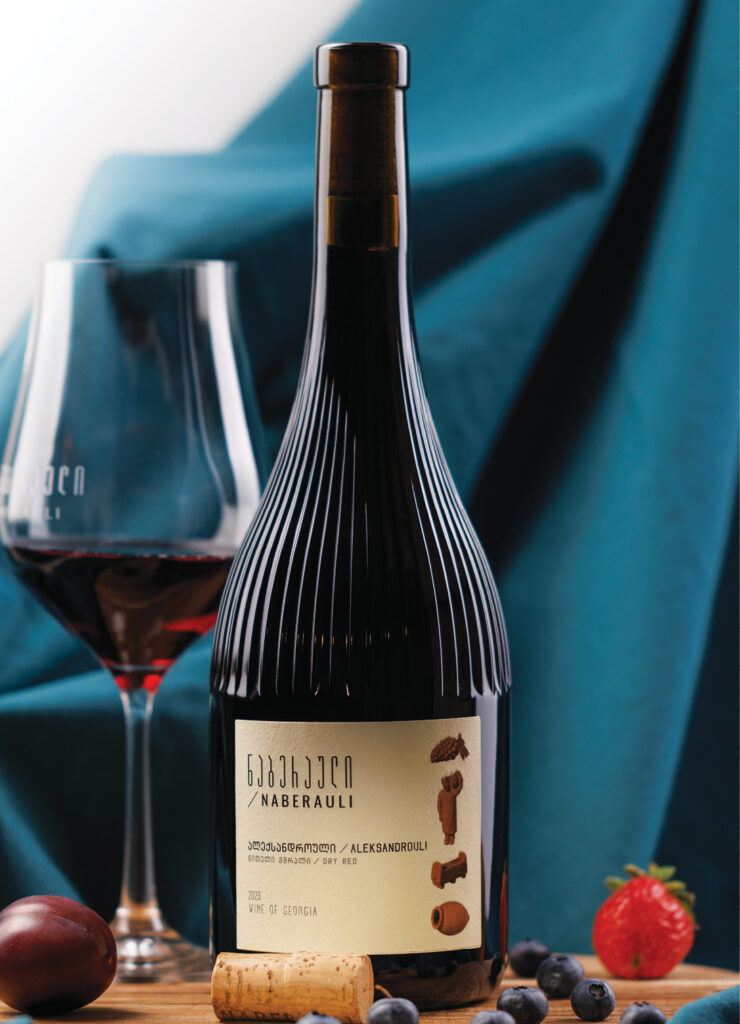
Q: Anna, which Rachvelian variety best expresses the character of this region for you?
A: In my experience, it’s Aleksandrouli. Initially, this wine was thick and a bit rough, much like how Rachvelians can seem at first. But once they open up, they become very warm and endearing, even affectionately calling you “Boshunika” (girl). The same transformation happened with my wine. It has now softened, revealing pleasant berry aromas and a lively character.
The quest for innovation, fresh perspectives, modern approaches to the same grape variety, and maximising potential—this is the journey of Ana Dokhnadze in truly Rachvelian wine.
ანა დოხნაძის თავგადასავალი „ნაბერაულის“ ძალიან რაჭულ ღვინოებში
ნანა ჯოჯიშვილი
რაჭა-ლეჩხუმი, მევენახეობა-მეღვინეობის თვალსაზრისით, საქართველოს ერთ-ერთ საინტერესო და ტრადიციულ მხარეს წარმოადგენს. აქაური ღვინოების უნიკალურობას მრავალფეროვანი ნიადაგები, კლიმატი და ავტოქთონური ჯიშები განაპირობებს. რეგიონის ხასიათი კარგად არის გამოხატული „ნაბერაულის“ ღვინოებში, რომლებიც რაჭული და ლეჩხუმური ყურძნის ჯიშებისგან – ალექსანდროული, მუჯურეთული, საფერავი, ძელშავი, ცოლიკოური, უსახელოური და რაჭული მწვანე – მზადდება.
მეღვინეობის ვენახები განლაგებულია სამხრეთით, ყველაზე ხელსაყრელ ფერდობებზე, რაც უზრუნველყოფს მზის პირდაპირ შუქს და შესაბამისად, ყურძნის მაღალ ხარისხს. „ნაბერაულის“ მისიას – აღადგინოს, შეინარჩუნოს და მსოფლიო ბაზარს წარუდგინოს რეგიონის უნიკალური ენდემური ვაზის ჯიშები, გასულ წელს, პროფესიით მეღვინე ანა დოხნაძეც შეუერთდა.
ანა დოხნაძე წარმოშობით რაჭველია. მეღვინეობაში მისი მშვიდი, თავდაჯერებული და პრინციპული გადაწყვეტილებები რაჭველი ადამიანის ხასიათს გამოხატავს. მიზანს, მჭიდროდ ყოფილიყო ამ რეგიონთან კავშირში, პროფესიის მეშვეობით მიაღწია. ანა „ნაბერაულის“ მთავარი მეღვინეა. მანამდე კი იყო სხვა მეღვინეობები, გერმანია, რაინგაუს რეგიონი, გაიზენჰაიმი, სადაც ვენახში ჯერ რთველში, შემდეგ კი მწვანე ოპერაციების დროს გადავიკვეთეთ.
Q: ანა, შარშანდელ რთველზე და ახალ ღვინოებზე რას იტყვი?
A: „ნაბერაულში“, სადაც შარშან ჩემი პირველი რთველი იყო, შვიდი ღვინო დავაყენე, მათ შორის, ლეჩხუმის ცოლიკოური, რომელიც ძალიან კარგ კონდიციაში დაიკრიფა. მინდოდა, ამ ყურძნისგან დაყენებულ ღვინოს გამოხატული ხასიათი და სხეული ჰქონოდა. მივყევი მის ჯიშურობას, თუმცა რადგან მსურდა, განსხვავებული ცოლიკოური ყოფილიყო, ექვსი თვე ლექზე დავავარგე. შედეგად, ჯიშურ არომატებთან ერთად, ღვინოს ლექზე დავარგების არომატებიც აქვს.
ანამ, რაჭული მწვანეს მტევნები შემოდგომის თბილი დღეების ბოლომდე დატოვა ვენახში. მიზანი შაქრიანობის მაქსიმალური დაგროვება იყო, რადგან მისი დაყენება ქვევრში ჰქონდა გადაწყვეტილი. „ამ ჯიშზე მუშაობისას რისკზე წავედი. რაჭული მწვანე სქელკანიანი ყურძენია. შეუძლია, შაქრიანობა კარგად დააგროვოს რაჭაში, თუმცა ვიფიქრე, ქვევრის ტიპის ღვინისთვის უფრო მეტი იყო საჭირო. მინდოდა, ამ ჯიშზე მხოლოდ ქვევრის მიმართულებით მემუშავა. ახლაც დაკვირვების ეტაპზე ვარ. ექსპერიმენტმა რა შედეგი გამოიღო, ამას დრო გვიჩვენებს.
ალექსანდროული-მუჯურეთულის როზე ცინცხალი და ხალისიანია, რომლის ჩამოსხმას მალე დავიწყებთ.
ალექსანდროული მშრალად დავაყენე. ღვინო ძალიან არომატული, საშუალოსხეულიანი და ცინცხალი გამოვიდა. რაჭული კენკრის არომატები აქვს. ძალიან სახასიათო ღვინოა.
საფერავი და ძელშავის დავარგებას კასრში ვაპირებ, რათა მათი პოტენციალი უკეთ დავინახო. ვიცი, რომ რაჭულ წითელ ღვინოებს კასრი უხდება.
ჩვენს ტვიშს (ნახევრად ტკბილი ღვინო) კარგი სიტკბოს და მჟავიანობის ბალანსი აქვს, ისევე როგორც მინერალურობა. ამ ღვინოში კარგად იგრძნობა ლეჩხუმური ტერუარი.
რაც შეეხება ხვანჭკარას (ნახევრად ტკბილი ღვინო), ვეცადე, ამ ღვინოში შაქრიანობის და მჟავიანობს კარგი ბალანსი დამეცვა.“
ანა ფიქრობს, რომ ტექნოლოგიური თვალსაზრისით ტკბილ ღვინოებზე უფრო მეტი მუშაობაა საჭირო, როგორც ვენახში, ისე მარანში. „მინდა, მაქსიმუმი გავაკეთო ყურძნის თითოეულ ჯიშთან. გერმანიის გამოცდილებამ ინსპირაცია მომცა სხვანაირად დამენახა როგორც რაჭის მეღვინეობა, ისე ამ რეგიონის ჯიშური მრავალფეროვნების რესურსი.“
Q: ანა, რომელი რაჭული ჯიში გამოხატავს შენთვის ამ რეგიონის ხასიათს?
A: ჩემი გამოცდილებით – ალექსანდროული. თავიდან ეს ღვინო არ იხსნებოდა, იყო ჯმუხი, ცოტა უხეშიც. თავიდან რაჭველებიც ხომ ასეთები არიან, მაგრამ გაიხსნებიან თუ არა, მაშინვე ძალიან თბილები ხდებიან, სიყვარულით ,,ბოშუნიკასაც‘‘ გეძახიან. ჩემი ღვინოც ასე იყო. ახლა დარბილდა, კენკრის სასიამოვნო არომატებიც გამოეხატა და ხალისიანიც გახდა.
სიახლეების ძიება, განსხვავებული ხედვები, თანამედროვე მიდგომები ერთი და იმავე ყურძნის ჯიშის მიმართ, ექსპერიმენტები და პოტენციალის მაქსიმალურად ათვისება – აი, ასეთია ანა დოხნაძის თავგადასავალი რაჭული ღვინის განვითარების გზაზე.
Naberauli Wines LLC
N 37 l I. Chavchavadze Ave., Tbilisi, Georgia. 995 599 025 425 | www.naberauli.ge |
info@naberauli.ge

